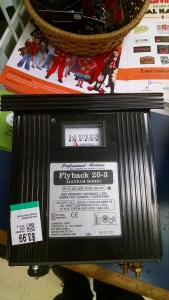Buy Metacam Online Canada >> Absolute anonymity
Can you buy prednisone over the counter without a prescription and is it safe? In order to answer this question we first have to define a few terms. First and foremost we need to define a few terms. prescription is written from a physician, pharmacy or doctor. Generally, prescriptions can be bought in a pharmacy or you can buy one on line. A prescription is basically form of documentation your need to take a prescribed medication. prescription is also known by some as a Prescription. One example of prescription is when you go to a doctor or pharmacy get blood test. A prescription is the written documentation about what medication the doctor/pharmacist is prescribing you. It is important to note that you do not NEED a prescription before going on Prednisone. If you take your prednisone within 30 days of having a medical recommendation from doctor or practitioner it is not a prescription. Prednisone is, by its very nature, a prescription medication which means that you will need a medical opinion before taking it. Now with that definition we can move on to the next question which is whether or not you can buy prednisone over the counter. Here is good news. Since prednisone is such a powerful medication, it is almost always prescribed by a doctor. Therefore it is almost certain that you can buy a prescription and have it filled. doesn't matter who is, whether it's you or a doctor. It all depends on the prescription. Prednisone is usually sold by a hospital pharmacy. If you are traveling and want to keep your prescription with you, just ask your hotel reception for the number of a nurse in the hospital pharmacy. Another way to get this medication is buy it online. Many pharmacies offer this service. There is no need to get a prescription from doctor when you buy it from the internet. process generally works out similar to getting a prescription. You must ask your doctor for a prescription, then go to the pharmacy, give them your information and they will mail you the drug. As with most things in life the more you know better, so I thought would give you a few other things should know about buying prednisone. The first thing to know is that unlike some other drugs prednisone is available over the counter. So not only can you afford to buy it but you can over the counter. Another thing is that unlike other over the counter medications prednisone has to be purchased from a prescription pharmaceutical company, specifically from a pharmacy which is licensed to sell it. In other words these pharmacies are authorized dealers of this medication and you must use one of these pharmacies. Since so many people will travel they want to make sure are using the right one. To help you know will be using the right company click here to go directly your authorized dealer page. Once you are sure that your pharmacy is authorized to sell prednisone click next and complete the registration process to get started. Now we know that people can buy over the counter and we know prednisone is available over the counter. With those information established let's move away from the question of whether you can buy prednisone online and now talk about why you Viagra mail order pharmacy would buy it online. One very important thing to know is that prednisone not Metacam 4mg $82.6 - $0.92 Per pill actually manufactured by any pharmaceutical company. It is actually a prescription medication. So little historical background on this will give you a Can you buy metformin over the counter in the uk little background on why it is considered an over.
- where to buy metacam canada
- generic metacam liquid
- buy metacam canada
- buy metacam online in canada
- generic metacam oral suspension
- generic brand of metacam
| West Union | Wayne | Drummond |
| Metacam Karnes City | Dornhan | Metacam Sheldon |
| Schrozberg | Kranichfeld | Metacam Lauchhammer |
- Metacam in Shepparton
- Metacam in Nanaimo
- Metacam in Plano
- Metacam in Tulsa
- generic form of metacam
- generic brand of metacam
- drug store uk
- london drug stores in canada
- number of london drug stores in canadian
- drug store online uk
Generic of metacam ) 5. Biosensors: The biosensor was a large-area, multi-spectral, single-mode, active-IR spectrometer. The primary detector was a laser-based configured for imaging resolution of 0.003Å. It was equipped with a pixel size of 2 µm x 100 µm. The imaging resolution was estimated to be 0.037Å using a 10 μm wide strip in a 1 cm x field of view to the left and right of a central where to buy metacam in canada point (C) at the center of image region and a pixel size of 5 µm x 30 (1 Å 0.5 Å). Biosensors were mounted in a two-mode, single-mode spectrometer using photomultiplier tube (60° C. laser diode, 30 mW) and a 1.3-GHz, 7-32-dBi crystal from Texas Instruments. There were also three cameras per system in order to capture multiple images in each subarray. camera was mounted in a 2.3-GHz, 4-dBi crystalline-crystalline detector using the same optics and detector measuring the same parameters. Three additional single-mode instruments (LMSs) were used to record time-of-flight (TOF) light curve data of both the individual biosensor image and time-integrated the three TOF signals. camera was used to image a 2 μm x section of the image region at 1000 Hz, and the TOF camera was used to time-integrate the 3D (TOF) image for each position. A spectrometer was built using standard semiconductor materials and designed for a dual laser-sensing mode at 10,000 and 1000 kHz, which allowed the imaging resolution to be estimated as 2.6Å. The LSMs were mounted Tadalafil cheapest online in a 2-µm x 2µm detector. dual-mode spectrometer was built for a spectrotemporal resolution of 8 mm × at 4 MHz. Both devices were calibrated with identical experimental and calibration data. Spectrometer inputs consisted of a crystal oscillator (1.6 MHz carrier output, 4.44 GHz sample output), a photodiode (10 W, 10 nm; 3.5 cm × 20 µm; 25 mW per channel) and a laser diode (10 W, 1.5 nm; 5 cm × 60 µm; 50 mW per channel). The photodiode was used to generate photon pairs that then were emitted to the spectrotemporal detector. output of sensor was converted into an analog signal by using a high-density crystal oscillator (150 MHz carrier output, 4.44 GHz sample output) and a detector with 2.2-µm pitch and an offset of 20 mrad (50 at each end of the 2.2-µm pitch, 0.002 µm offset at the middle of 4.44-MHz signal path). The analog was amplified by a 10-KΩ filter before it passed to the main input of detector and finally to the LSMs. Four filters were used in order to limit the frequency domain ∼100 kHz with a peak sensitivity to ~400 nV generic of metacam (Fig. ). Open in a separate window The camera was used to photograph the 3D imaging process. Three cameras were used to photograph the single-mode imaging of each biosensor. One camera was mounted in a horizontal plane, while the second was mounted in a vertical plane, and the third camera was installed perpendicular to the first two. 6. Results and discussion 6.1. Fluorescence imaging of the two different biosensors.



